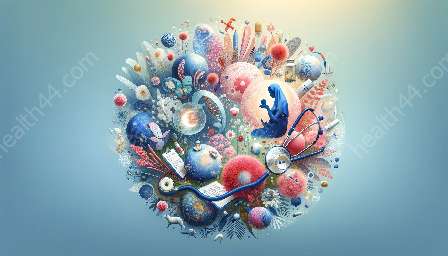As girls transition from adolescence to adulthood, their reproductive systems undergo significant changes. Understanding the key differences between the reproductive systems of adolescent girls and adult women is crucial for both adolescent gynecology and obstetrics and gynecology. In this comprehensive guide, we will explore the physical and physiological variances, including the onset of puberty, menstrual cycles, hormonal regulation, and reproductive health concerns.
Onset of Puberty
One of the primary differences in the reproductive system between adolescent girls and adult women is the onset of puberty. Adolescent girls typically experience the onset of puberty between the ages of 8 and 13, marked by the development of secondary sexual characteristics such as breast development, the growth of pubic hair, and the beginning of menarche. In contrast, adult women have completed puberty and have fully developed sexual characteristics.
Menstrual Cycles
Another significant distinction is the pattern of menstrual cycles. Adolescent girls often have irregular menstrual cycles during the initial years following menarche, as their bodies adjust to hormonal fluctuations and establish a regular pattern. The length and intensity of menstrual flow may vary, reflecting the immaturity of the reproductive system. In contrast, adult women typically have regular menstrual cycles, characterized by consistent cycle length and predictable menstrual flow. This difference is essential to consider when addressing menstrual irregularities in adolescent gynecology and obstetrics and gynecology.
Hormonal Regulation
The hormonal regulation of the reproductive system also differs between adolescent girls and adult women. During adolescence, the hypothalamic-pituitary-gonadal axis undergoes maturation, leading to the initiation of the menstrual cycle and ovulation. Hormonal fluctuations, especially in estrogen and progesterone, play a crucial role in regulating the menstrual cycle and influencing the development of secondary sexual characteristics. In adult women, the hormonal regulation is more stable, and the menstrual cycle follows a predictable pattern, ultimately supporting fertility and reproductive health.
Reproductive Health Concerns
Reproductive health concerns in adolescent girls and adult women also vary. Adolescent gynecology focuses on addressing concerns such as menstrual irregularities, puberty-related issues, contraception education, and sexual health awareness. Common conditions in adolescent gynecology include dysmenorrhea, polycystic ovarian syndrome (PCOS), and menstrual disorders. On the other hand, obstetrics and gynecology in adult women encompass a broader range of reproductive health issues, including fertility challenges, pregnancy care, menopausal health, gynecological cancers, and reproductive endocrinology.
Conclusion
Understanding the key differences in the reproductive system between adolescent girls and adult women is essential for healthcare providers specializing in adolescent gynecology and obstetrics and gynecology. The transition from adolescence to adulthood involves intricate physiological changes that impact reproductive health, requiring tailored care and support at each stage. By recognizing these variations, healthcare professionals can provide comprehensive and personalized care to address the unique needs of adolescent girls and adult women in terms of their reproductive systems.


